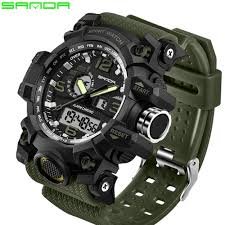The Evolution of Digital Watches: A Timekeeping Revolution
In our fast-paced world, the humble wristwatch has undergone a remarkable transformation thanks to digital technology. From the early days of mechanical timepieces to the sophisticated digital watches of today, the evolution of watchmaking has been a captivating journey. Let’s delve into the fascinating world of digital watches and explore how they have revolutionized timekeeping.
Origins of Digital Watches
The concept of digital timekeeping emerged in the 1970s when technology was advancing rapidly. The first digital watch, the Hamilton Pulsar, was introduced in 1972. This groundbreaking timepiece replaced traditional hour and minute hands with a digital display, using light-emitting diodes (LEDs) to show the time in numeric form. The Pulsar was not just a watch; it was a symbol of the burgeoning digital age.
Advancements in Display Technology
Following the LED displays of the early digital watches, newer models began to incorporate more advanced technologies. Liquid Crystal Displays (LCDs) became popular due to their lower power consumption and improved visibility. These watches featured sleeker designs and offered additional functionalities such as alarms, timers, and even basic calculators.
Integration of Features
As digital watches gained popularity, manufacturers started integrating more features into these timepieces. Digital watches became multifunctional devices, incorporating calendars, chronographs, and world time capabilities. Some models even included sensors for measuring heart rate, altitude, and temperature, appealing to athletes and outdoor enthusiasts.
The Rise of Smartwatches
In recent years, the digital watch has undergone yet another transformation with the advent of smartwatches. These sophisticated devices go beyond timekeeping, offering a wide range of functionalities similar to smartphones. Smartwatches can track fitness metrics, provide notifications, play music, and even make contactless payments. They have become essential companions for tech-savvy individuals seeking convenience and connectivity on the go.

Customization and Style
One notable aspect of digital watches is the versatility in design. They come in various shapes, sizes, and materials, catering to different tastes and lifestyles. Whether it’s a sleek, minimalist watch for everyday wear or a rugged, feature-packed smartwatch for outdoor adventures, there’s a digital watch to suit every preference.
The Future of Digital Watches
Looking ahead, digital watches are poised to continue evolving. Innovations in battery technology, display materials, and connectivity will drive further enhancements. Future digital watches may incorporate advanced health monitoring features, augmented reality displays, and seamless integration with other smart devices.
Conclusion
The digital watch has come a long way since its inception, evolving from a simple timekeeping device to a sophisticated wearable technology. With each advancement, these watches have redefined our expectations of what a wristwatch can do. Whether you prefer the classic charm of a traditional digital watch or the cutting-edge capabilities of a smartwatch, one thing is certain: the evolution of digital watches reflects our ongoing quest for innovation and convenience in everyday life.

